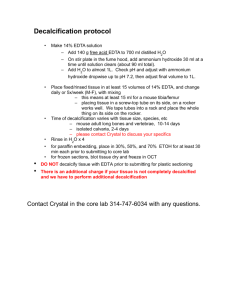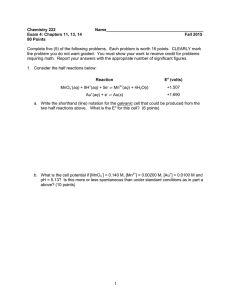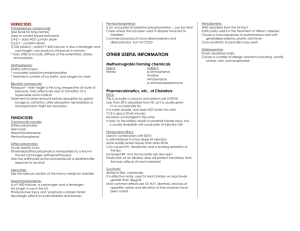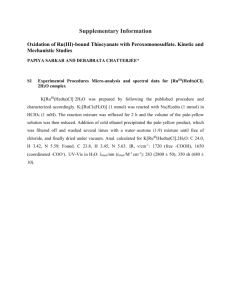Model exam Questions
advertisement
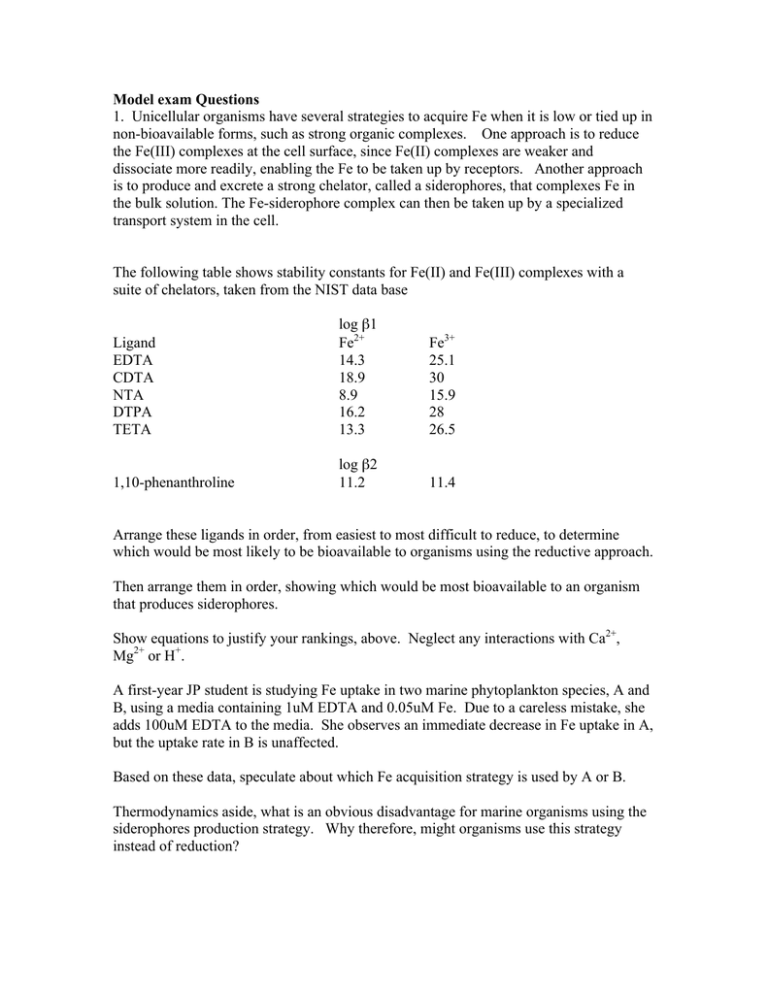
Model exam Questions 1. Unicellular organisms have several strategies to acquire Fe when it is low or tied up in non-bioavailable forms, such as strong organic complexes. One approach is to reduce the Fe(III) complexes at the cell surface, since Fe(II) complexes are weaker and dissociate more readily, enabling the Fe to be taken up by receptors. Another approach is to produce and excrete a strong chelator, called a siderophores, that complexes Fe in the bulk solution. The Fe-siderophore complex can then be taken up by a specialized transport system in the cell. The following table shows stability constants for Fe(II) and Fe(III) complexes with a suite of chelators, taken from the NIST data base Ligand EDTA CDTA NTA DTPA TETA log β1 Fe2+ 14.3 18.9 8.9 16.2 13.3 Fe3+ 25.1 30 15.9 28 26.5 1,10-phenanthroline log β2 11.2 11.4 Arrange these ligands in order, from easiest to most difficult to reduce, to determine which would be most likely to be bioavailable to organisms using the reductive approach. Then arrange them in order, showing which would be most bioavailable to an organism that produces siderophores. Show equations to justify your rankings, above. Neglect any interactions with Ca2+, Mg2+ or H+. A first-year JP student is studying Fe uptake in two marine phytoplankton species, A and B, using a media containing 1uM EDTA and 0.05uM Fe. Due to a careless mistake, she adds 100uM EDTA to the media. She observes an immediate decrease in Fe uptake in A, but the uptake rate in B is unaffected. Based on these data, speculate about which Fe acquisition strategy is used by A or B. Thermodynamics aside, what is an obvious disadvantage for marine organisms using the siderophores production strategy. Why therefore, might organisms use this strategy instead of reduction? 2. Write balanced equations for the reactions for the following oxidations and reductions: Mn2+ to MnO2 by Cl2 H2S to SO42- by H2O2 MnO2 to Mn2+by H2S Arrange the following in order of increasing pe Lake water, pH 6.5 Seawater, pH 8.3 Sediment porewater Groundwater containing 10-4 M Fe(II) Can the oxidation of ammonia to nitrate by sulfate be mediated by bacteria at pH 7? Is the oxidation of HS- to SO42- by NO3- thermodynamically possible at pH 9? 3. A student is studying the oxidation kinetics of Cu(I) in seawater by molecular oxygen in seawater. He notices that the reaction deviates significantly from pseudofirst order kinetics. He assumes that this is because the reaction is reversible so he adds 10-5 M EDTA to the solution. The reaction now displays pseudo-first order kinetics, but the initial rate is about 10x faster than in the original solution. a) How did he determine that the reaction was pseudo-first order in the presence of EDTA? How did he show that it departed from pseudo-first order behavior in the first place? How could this reaction be reversible? What is the reductant? b) How would EDTA affect the reverse reaction? Why is the initial rate so much faster?



